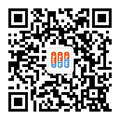Deeplight Technology | CTIA Cybersecurity Internet of Things Network Security Testing Service
IoT devices are connected to at least one network to exchange data with other devices, vehicles, home appliances, infrastructure, etc. This equipment may include hardware, software, sensors, actuators and network connections.

Ⅰ . CTIA Cybersecurity testing and certification can be divided into two types:
1. Only do Cybersecurity testing
2. To do the Cybersecurity test and submit the CTIA certification, you need to pay the CTIA listing fee. The listing fee varies from US$500 to US$1,000 depending on the security level.
Ⅱ . CTIA network security certification is divided into three levels:
The first level identifies core IoT device security functions;
Layers 2 and 3 identify security elements that increase device complexity, sophistication, and manageability.
The content is layered as follows:
(1) Level 1 IoT security features include:
Terms of Service and Privacy Policy – The Devices Terms of Service and Privacy Policy are readily available. The terms of service cover the "end of life" of the device.
Password Management – The device supports local password management.
Authentication – The device supports user authentication.
Access Control – The device enforces role-based access control.
Patch Management – Devices support automatic and manual patch installation from authorized sources.
Software Upgrades – The device supports manual installation of software upgrades from authorized sources.
(2) Level 2 Internet of Things Network Security Test
Level 2 IoT security features expand upon Level 1 IoT security features and add:
Audit Log – The appliance supports collecting audit log events and reporting them to EMS using IPsec, SSH, TLS or DTLS for encryption and integrity protection.
Data Encryption in Transit – The device supports encrypted communication using IPsec, SSH, TLS or DTLS.
Multi-Factor Authentication – Devices support multiple authentication factors.
Remote Deactivation – The unit can be deactivated remotely via EMS.
Secure Boot - The device supports a secure boot process to protect its hardware (e.g. UEFI).
Threat Monitoring – The appliance supports logging anomalous or malicious activity based on configured policies and rules.
IoT Device Identification – The device provides an IoT device type and a globally unique IoT device identification.
(3) Level 3 Internet of Things Network Security Test
Level 3 IoT security features expand upon Level 1 and Level 2 IoT security features and add:
Data-at-Rest Encryption – The device supports an efficient mechanism to encrypt data stored on the device.
Digital Signature Generation and Verification – The device supports the generation and verification of digital signatures.
Tamper Evidence – Devices have the ability to alert monitoring systems when physically opened.
Design-In Capabilities – Devices contain functions that ensure failsafe, provide perimeter security, and ensure functional isolation.
The above is the introduction of CTIA Cybersecurity’s Internet of Things network security testing service. Welcome to consult the testing fee and testing time of this project of Deeplight Technology.
Recommended items
-

What items are tested for GCF certification / PTCRB certification?
The full name of GCF certification is Global Certification Forum (Global Accreditation Forum). GCF certification is an organization jointly established by operators and terminal manufacturers. At present, it mainly conducts certification for GSMWCDMALTE products. GCF certification is based on the voluntary principle. Terminal manufacturers declare whether their product...View more -

PTCRB certification and GCF certification debug analysis
The designed product is PTCRB certified for the first time, and no certified modules are added to the finished product. It is not a deformation certification, not a re-band, not an ECO, etc., so the problems involved in debugging will be deeper. In addition, the examples here only refer to the problems that occur in the Protocol and SIM tests, and other RF and OTA problems do n...View more -

Deeplight obtained PTCRB certification for North American network access of NB-IOT+Cat M dual-mode IoT products for Singapore customers
PTCRB certification, as a quasi-mandatory certification for the North American market for products using wireless cellular technology (2G3G4G LTE FDD TDD NB-IOT Cat M5G SA NSA), has been accepted by the industry for many years. PTCRB certification not only needs to obtain a certificate but also needs to be listed on the PTCRB official website , so that the...View more -

Deeplight| 3G/4G/NB-IOT/CAT M5G/SA/NSA real base station live network test service
Deeplight| 3G4GNB-IOTCAT M5G SA NSA real base station live network test serviceView more




